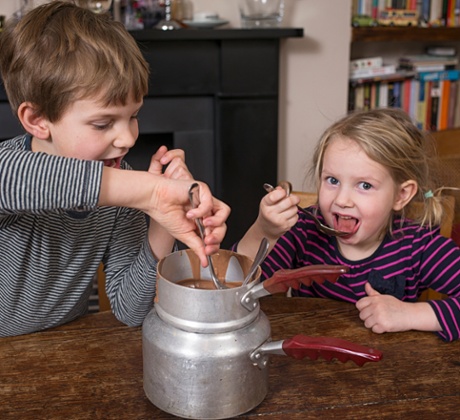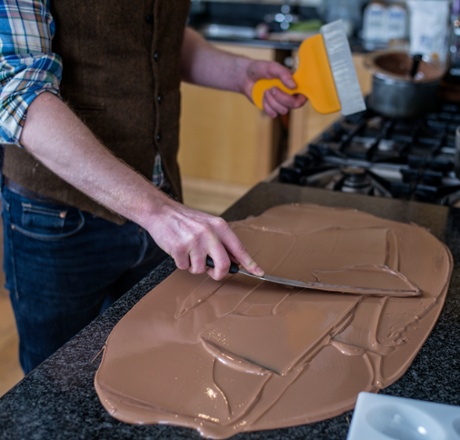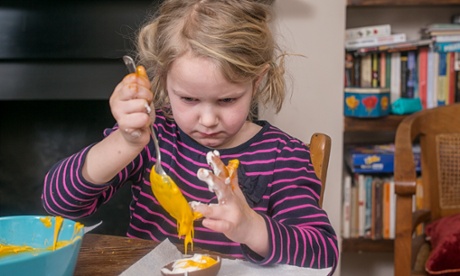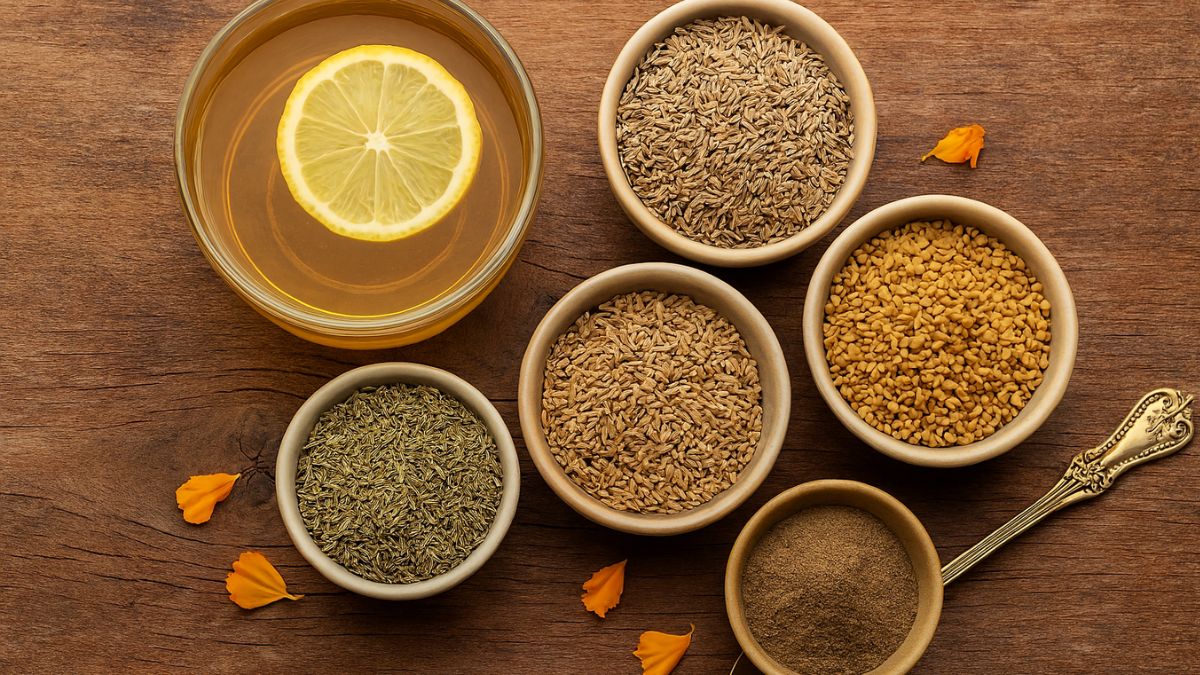With two huge bags of chocolate, a heap of fondant icing and a little help from a master chocolatier, Zoe Williams and her children create a homemade version of the Easter classic
“On a low chocolate day, I might eat 200 grams. On a high chocolate day, 400.” What would impress most people, immediately, about the chocolatier Paul A Young is his slim physique, which surely defies the laws of physics. I am more impressed by his sheer stamina, how he musters the enzymes to digest that much chocolate. The true chocolatier, it seems, is born, not made.
He has come round to teach me and my children how to make Creme Eggs. However, if you spell it like that, it’s trademarked, and you’re not allowed to so much as wonder about them out loud. If you spell it cream egg, then that’s fine, but the discerning customer would then expect them to contain cream. I think we are safe with Creem Egg. We are making Creem Eggs such as you could only D-Reem about.
He is describing his vision, while my warmints – five and seven – stand on the stairs, looking through the bannisters. A man in a waistcoat that matches his beard has just arrived in the house with two ginormous bags of chocolate and commenced melting it into two giant vats. It is just about the weirdest thing that has ever happened. I think they are resisting coming fully into the room in case he turns out to be a prank and explodes.

“They’ve changed the chocolate on the real thing,” Paul says, with a detached, gentlemanly concern. “I don’t know if it was to suit the American palate, but it’s certainly sweeter.” Cadbury’s, bought by Kraft and now owned by Mondelez, already had an American version of the egg (this should shame us: theirs is smaller) so there was really no need. But they changed it anyway, from Dairy Milk to standard cocoa mix. I haven’t tried it yet. It might be horrible but, technically, so is the original on paper. My seven-year-old asks Paul why American chocolate is inferior in general, and he replies, “People think it’s because it’s sweeter, and it is, but it’s because they use a different milk powder that it tastes different. Theirs contains a lot of butyric acid, which is the main smell of human vomit.” The child makes a face, to indicate, “Just once in a blue moon, you ask an adult a question, they tell you something interesting.”
Paul doesn’t intend to mess with the traditional Creme Egg fondant in too serious a way; he’s just going to subtly flavour it with vanilla. The chocolate will remain simply chocolate, except much higher quality than Dairy Milk (Valrhona milk) and, as such, less sweet. I suddenly realise how disgusting a Creme Egg should, theoretically, be: the fondant isn’t flavoured with anything, it’s just plain sugar. Nothing, not the tang of orange or fake strawberry, takes the edge off its tooth-squeaking sweetness. The chocolate, meanwhile, has no depth, no dark heart, no edge to grab hold of, just a fatty residue and a head throbbing with hyperglycaemia. They should be revolting, and yet they are delicious. They are outrageously nice.

When the chocolate is melted, you have to temper it. “It’s really no different from tempering steel,” Paul says – because that’s an easy, everyday experience we can all relate to. “It gives it strength.” You pour two-thirds of the chocolate on to a marble surface. You have a palette knife and a scraper – a chocolate one if you like, or a wallpaper one will do. You mix and spread and mix and spread and mix and spread. At some point, between 29C, when the chocolate starts to be workable, and 26C, when it hardens, you have a window of influence over its final appearance. You probably think it would help if I’d taken a video of Paul, but trust me, it wouldn’t; he has the fine, fluid, deft, inimitable movements of someone to whom the prefix “master” would be applied, someone who would belong to a guild. He started work as a pastry chef two decades ago, working 19-hour days in the kitchens of Marco Pierre White. There is more expertise just in his muscle memory than you will ever know. But that doesn’t mean you can’t temper your own chocolate; the principles are just that you need to keep moving it, and spreading it, until it starts to solidify. Then, pop it back with the still-melted chocolate, to bring it back to a liquid state. You can manage all this. You just can’t expect to look cool while you do it.
I bet you’ve wondered how to coat an egg mould, right? With a brush? With your finger? No! You fill the whole mould, leave it for two to three minutes and pour the excess out. Fridge for 20 minutes. Maybe take yourself off for some other activity so you don’t rush it. Wham. Shiny, beautiful egg halves. You don’t even have to fill them with fondant. You could fill them with something nice.

For the filling, you take a block of white fondant icing, split it in half. Ask one child to mix theirs with yellow food colouring, tell the other child not to. Weather the tantrum, where the one with the white wants the yellow and the one with the yellow wants the white but won’t swap. Give them both a grater, ask them to grate their icing. Have a nervous breakdown while you watch. Mix the grated fondant with sugar syrup (not water) to thin it. Fill the egg halves, in a fried egg stylie, so that there’s no air bubble. “Will that make it rot?” I ask Paul. “No, it’s just not very nice to bite into an air bubble,” he replies. Of course. What could possibly rot, in a sugar environment like this? Stick the two halves together with melted chocolate.
“It’s surprising how many people will eat a Creem Egg, considering they don’t like fondant,” he says, cutting one in half, surveying his handiwork. He eats some. The kids and I fill our sorry faces, then roll around for the rest of the day like dogs who’ve eaten a cheese wheel.

Make your own Creem Eggs
Take 800g chocolate and melt it in a bain marie to 45C. Never a microwave, it won’t achieve a good melt and may burn the chocolate.
Pour two-thirds of the chocolate on to a large marble surface. Ideally you will have this installed already and call it your counter. Temper it with a palette knife and a scraper, moving, spreading, piling in, spreading again, moving, until it starts to solidify.
Plonk it back into the remaining third of still melted chocolate. Mix well until evenly smooth. Pour the whole lot into your mould and tap to release any air bubbles.
Leave it for two to three minutes. Pour out the excess. Put the shells in the fridge for 20 minutes.
Put 100g sugar and 100ml water into a pan and dissolve to make sugar syrup.
Take 500g of white fondant icing, cut it in half, pummel yellow food colouring into one half.
Grate the icing and mix it with sugar syrup until it is the consistency of buttercream icing.
Fill each shell half with white fondant then a dollop of yellow for the yolk and stick the two halves together with a little melted chocolate.
Your eggs will – but are unlikely to – last for one month.
Creem eggs all round … Zoe Williams with her warmints Thurston and Harper, and chocolatier Paul A Young. Photograph: Sarah Lee for the Guardian














